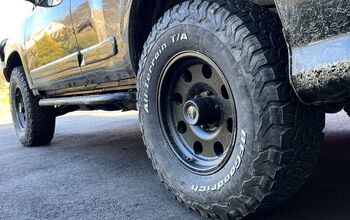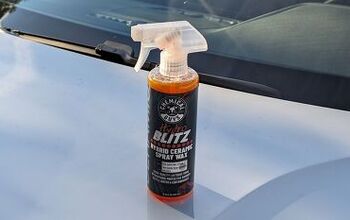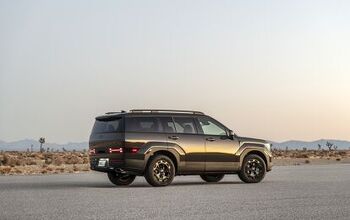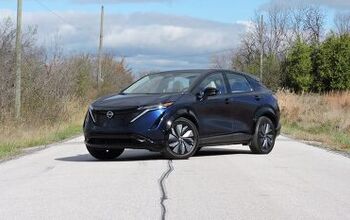2011 Audi R8 Spyder 5.2 Review

Audi won hard-earned respect with its R8 sports car – despite the initial questions about its similarities and overlap with the Lamborghini Gallardo, it’s managed to carve out its own niche among customers. The R8 is the more clinical, safer, responsible choice, believe it or not. Its 420-horsepower V8 supplemented by a 525-horsepower 5.2-liter V10 for Ferrari-challenging performance. A new GT version is coming too, with pared-down weight and sharper reflexes. All designed to appeal to the enthusiast behind the wheel.
FAST FACTS
| 1. Powered by a Lamborghini-sourced 5.2L V10 engine, the 525-hp R8 5.2 Spyder can hit 60 mph in just 4.0 seconds. |
| 2. A V8-powered model is also available with 430-hp and both engines can be had in the hard top version. |
| 3. Pricing for the V10 Spyder starts at $162,700. |
FOR THOSE LOOKING TO BE SEEN
To help broaden the R8’s microscopic appeal, Audi feels that perhaps offering a version that speaks more to those who want to be seen would be smart. Enter the R8 Spyder, a drop-top version of the well-balanced machine that’s sure to be the sales leader in places like Miami and Los Angeles. But what sacrifices were made to deliver the Spyder to showrooms?
Thankfully, not a lot. The R8 still pushes all the right buttons. From the A-pillar forward, nothing’s changed from the V10 coupe. But the back two-thirds sees significant alterations to accommodate the folding soft-top. First the signature contrasting side ‘air blades’ that direct cool air into the engine compartment and rear brakes are gone, replaced by wider, more prominent scoops. The fuel-tank filler is now repositioned to the flat rear deck. Obviously, the see-through engine cover is missing too, hiding the gorgeous V10 under vented carbon-fiber and aluminum bodywork. The alterations mean the R8 Spyder loses some of the drama afforded the coupe. Ironic given its target audience…
In order to keep weight down and avoid dealing with difficult packaging issues, the R8 Spyder uses a three-layer powered soft top that stows in 19 – that’s 19, not 20 – seconds. Like other European rivals, the Audi can also drop its roof at speeds up to 31 mph.
Otherwise, the Spyder keeps the same 19-inch 10-spoke wheels, rear-biased quattro all-wheel drive and full LED headlights pioneered on the 5.2 FSI. That also includes the interior, which despite being almost five years old, still ranks as one of the classiest and most comfortable in any class. Somehow, Audi is able to make the R8 comfortable for even tall drivers, with ultra-supportive sport seats, a tilt-telescoping steering wheel, and cabin that’s surprisingly easy to see out of.
Changes made for the Spyder are small, but include a seatbelt-mounted Bluetooth microphone that’s about the size of a Tic-Tac so day traders won’t mix up buy and sell orders thanks to a stray wind gust. There’s also specially treated leather that’s designed to keep the seats cool even in direct sunlight.
Otherwise, the standard navigation with rear-view camera and Bang & Olufsen sound system carry over from the coupe. But the real peach is the meaty, aluminum shifter and chromed shift gate for the six-speed manual transmission. There’s such a tactile joy in getting the simple operation of choosing gears properly. A click-clack signals a nice up-shift, won’t be rushed; you need to be accurate to drive it smoothly, but strangely, given the power of the engine, is no more difficult to operate than an A5.
THRUST-FILLED V10 BEST PAIRED WITH A STICK-SHIFT
While most will inevitably order their R8 Spyders with the R tronic semi-automated transmission, this is one area where the Audi feels like it’s dated. Audi reintroduced dual-clutch automatics in its own vehicles, Porsche offers its PDK in every vehicle bar the Cayenne, heck even Ferrari is now moving to an all dual-clutch line. Offering only the stuttering, head-snapping R tronic single-clutch unit doesn’t gain points in our book, especially to a crowd who value cruising smoothly.
Whichever transmission you choose, yes, that screaming 525 horsepower 5.2-liter V10 engine loves to rev. Revels in it. That wicked soundtrack that you’d roll down the R8’s windows to hear that much clearer is now positioned right behind your head. With the top down, all those levels of interference between you and the howl delivered at its 8500 rpm fuel cut-off are gone. It’s wicked stuff.
The Spyder does its best to retain the regular R8’s magical balance, laser-guided steering and hero-making moves, but it’s ever so slightly softer, the responses a fraction later. This can mainly be attributed to the 250-pound weight gain thanks to the roof system and additional bracing over the V10 Coupe. But anyone who buys a car like this is looking to make a statement, not set fast laps at Laguna Seca.
THE VERDICT
So can you make a left-brained argument for such a right-brained sports car? Make no mistake – buying any R8 is not a practical experience, the Spyder even less so given that it costs $162,700 before options and only gets 12 mpg in the city and 19 on the highway. But strangely, if equipped with the right winter tires, would serve as year-round transportation quite happily if you can afford the insurance.
Those couple hundred people who purchase the R8 Spyder will likely leave satisfied with their decision, if only because Audi knows how to properly flatter and coddle its high-flying customers. We’d guess that less than a quarter will ever get the engine close to half-way round the dial, thus missing the point entirely…
RELATED READING
2010 Audi R8 V10 5.2 FSI: First Drive
2010 Lamborghini LP560-4 Spyder Review
2010 Aston Martin DBS Volante: First Drive
2009 Maserati GranTurismo S
2011 Ferrari 458 Italia Review
LOVE IT
- Screaming V10 directly behind your ears
- Handling makes you feel like a hero
- Manual gated shifter
LEAVE IT
- $163K starting price
- 200 lb weight gain
- R tronic transmission too hard-core

Mark has worked as an automotive journalist for over 10 years, starting as a student at Centennial College, in Toronto, by launching an auto-review section in the college paper, The Courier. Since then, he's been Editor of Inside Track Motorsport News and its Streetwise section of new-vehicle reviews and industry news, done stints at Carguide and World of Wheels, and currently works as an award-winning freelancer for AutoGuide.com, MSN Autos Canada and more. He's also a first-time father, so don't be surprised if the frustration of properly installing a car seat creeps into his work.
More by Mark Atkinson
































Comments
Join the conversation